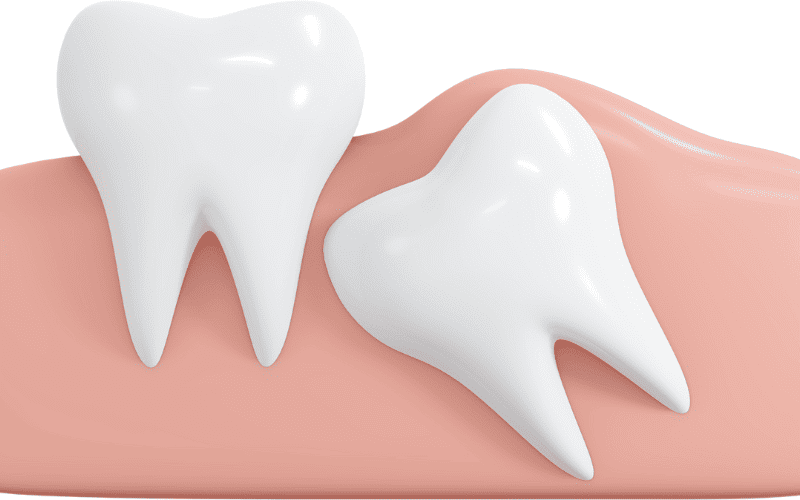ONLINE SCHEDULING AND VIRTUAL CONSULTS AVAILABLE

5 Signs That Indicate You May Need a Tooth Extraction

When tooth problems arise, understanding the signs that suggest a potential need for extraction becomes crucial for maintaining oral health. This blog aims to shed light on five key indicators that may signal the necessity of tooth removal. By recognizing these signs early on, individuals can seek timely intervention, preventing further complications and promoting overall dental well-being.
Tooth extraction is a common dental procedure undertaken to address various issues, ranging from severe pain to structural damage. By familiarizing oneself with the signs discussed in this blog, individuals can become proactive in managing their dental health. This proactive approach empowers individuals to collaborate effectively with their dentist in devising personalized treatment plans tailored to their unique needs and circumstances.
Ultimately, the goal is to ensure that individuals make informed decisions regarding their oral health, leading to a brighter and healthier smile for years to come.
Severe Tooth Pain
Severe tooth pain often serves as a clear indicator that tooth extraction Plantation may be necessary. This intense discomfort can stem from various underlying issues, necessitating prompt attention from a dental professional. Understanding the potential causes of severe tooth pain is crucial for identifying the root problem and determining the appropriate course of action.
From untreated cavities to advanced gum disease or abscesses, several factors can contribute to the development of severe tooth pain, highlighting the need for comprehensive evaluation and timely intervention by a dentist.
Gum Disease and Infection
Gum disease and infection pose significant risks to dental health and may necessitate tooth extractions if left untreated. Progressive gum disease, such as periodontitis, can lead to the deterioration of gum tissues and bone supporting the teeth, ultimately causing teeth to become loose or infected.
Recognizing the symptoms of gum disease and infection is crucial for early intervention and preventing the need for extraction. Symptoms may include persistent bad breath, swollen or bleeding gums, and the formation of pockets between the teeth and gums. Timely detection and treatment of gum disease and infection can help preserve dental health and prevent the need for extraction.
Tooth Damage or Trauma
Tooth damage or trauma can sometimes result in the need for tooth extraction, especially if the injury is severe or affects the tooth’s structure. Trauma from accidents, sports injuries, or biting down on hard objects can cause fractures, cracks, or even dislodgment of the tooth.
Additionally, untreated cavities or extensive decay can weaken the tooth’s structure, making it more susceptible to damage. Recognizing common causes of tooth damage or trauma is essential for taking preventive measures and seeking prompt treatment when needed. Early intervention can help preserve the tooth and avoid the need for extraction in some cases.
Overcrowding or Impacted Teeth
Overcrowding occurs when there isn’t enough space in the jaw to accommodate all the teeth properly. This can lead to misalignment, discomfort, and difficulty maintaining proper oral hygiene. Impacted teeth are those that cannot emerge fully through the gums due to obstacles like crowding or blockages.
Commonly impacted teeth include wisdom teeth, which may not have enough space to erupt properly. If left untreated, overcrowding or impacted teeth can result in various issues such as tooth decay, gum disease, and even damage to adjacent teeth. Recognizing these signs is crucial for addressing them promptly and preventing further complications.
Wisdom Tooth Complications
Wisdom teeth, also known as third molars, often pose problems due to their late eruption and limited space in the mouth. Complications such as impaction, infection, and cyst formation may necessitate extraction. Symptoms of wisdom tooth complications include pain, swelling, redness, and difficulty opening the mouth.
Additionally, impacted wisdom teeth can cause crowding, shifting of adjacent teeth, and damage to surrounding structures like nerves and bone. It’s essential to address these symptoms promptly to prevent further complications and maintain overall oral health. Regular dental check-ups can help monitor the development of wisdom teeth and identify potential issues early on.
Other Dental Issues
Recognizing signs beyond those listed above can also indicate the necessity of tooth extractions. Consulting a dentist for thorough examination and diagnosis is crucial in such cases to determine the best course of action. Here are some additional signs that may warrant tooth extraction:
- Recurrent or severe tooth decay that cannot be effectively treated with fillings or root canal therapy.
- The presence of a dental abscess, which is a pus-filled sac caused by bacterial infection requires prompt treatment.
- Development of oral tumors or cysts that affect the surrounding teeth and tissues.
- Compromised tooth structure due to extensive damage or fractures, making restoration impossible.
Identifying the signs that suggest the need for tooth extractions is crucial for maintaining optimal oral health. Whether it’s severe tooth pain, gum disease, tooth damage, or wisdom tooth complications, early recognition and prompt action can prevent further complications. If you experience any of these symptoms, consult a dentist promptly for a thorough evaluation and personalized treatment plan to preserve your smile’s health and beauty.





